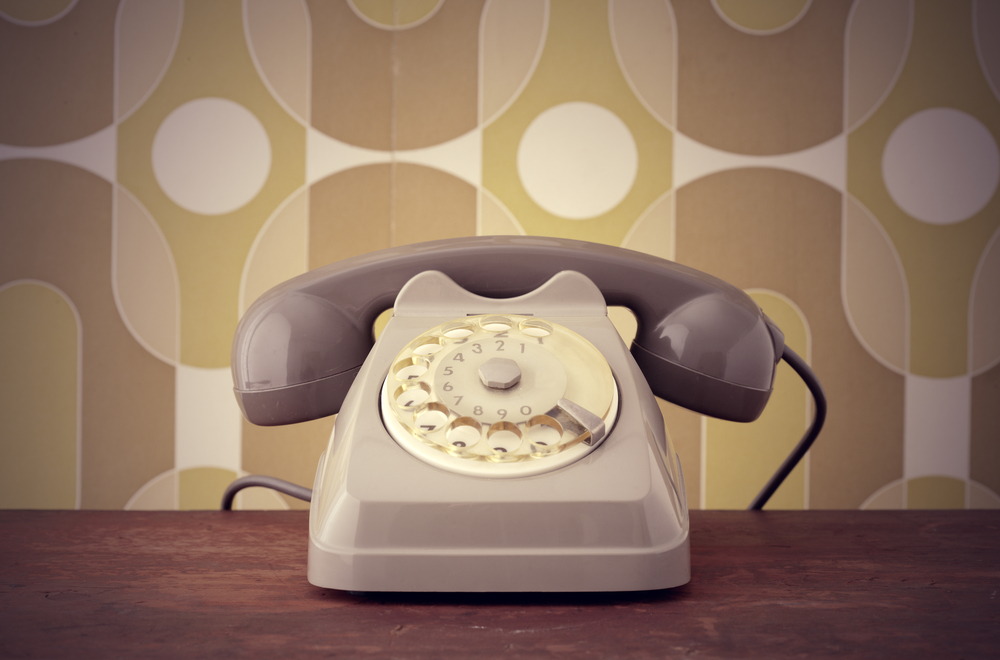
Just when you were finally getting used to the world being digital, now the world has gone mobile. Games, movie tickets, valet parking, coupons, even voting for So You Think You Can Dance – everyday life is now conducted on your phone. Oh, and it makes phone calls too – if you’re still making those! Landlines have been declining in popularity and usage for years, and as of December 2015, only 8% of American homes had just a landline. Almost half of U.S. homes only have a cell phone, and the Centers For Disease Control says this is a trend across age groups and income levels. So do you or your loved one really need a landline? Our Caregiver Cheat Sheet will help you weigh the cost and the benefit of a landline in your home.
The Pros Of A Landline
There are 6 great reasons to keep your landline:
- Power outages: A cellphone has to be charged to be used. An old-school, ‘plug the wire into the phone jack’ phone will work when you’re sitting in the dark listening to your food melt.
- 911: A landline, of course, has a fixed location. A cellphone does not. Emergency services can find you faster when you call from a landline, because your address is communicated directly to the dispatcher. A cellphone’s location has to be triangulated from the nearest cell towers, if you’re not able to give your location or don’t know where you are.
- Reception: Some people spend a lifetime figuring out which carrier gives them the best reception in their walk-in closet. Landlines work in every room in your house.
- Bundling: Phone companies are aware of the landline-less trend, and are including phone service as part of a bundle with internet and television. If you cancel your landline, the cost of these other services usually increases.
- Reverse 911 calls: many communities call landlines to inform citizens of emergencies like tornadoes or hurricanes. Cellphones and VoIP lines have to register for these calls.
- Public utility protection: phone service delivered over copper wires is regulated as a public utility, providing service cut-off protections, and truth-in-billing protections. Cell phones and VoIP lines don’t qualify for these protections.
- Security: many medical alert services use a landline, so if your loved one has an alert system connected to a landline, that landline needs to stay in service.
The Cons of a Landline
The best reasons to cut your landline are financial, but privacy and security play a role too:
- Cost: the average monthly cost for a landline that includes only unlimited local calling now ranges between $15 and $30. Add another $15 to $30 for other services like voicemail, caller ID and long distance calling. Wouldn’t you like to save $180 to $540 a year?
- Privacy?: telemarketers, robocalls and wrong numbers – seems like no one you really want to talk to calls your landline. But you’re in the directory, unless you pay to keep your number private.
- Redundancy: you already have a phone, which is also a computer, a friend and a toy, so why do you need another phone?
- Obsolescence: so many people are ditching their landlines that AT&T and the like are ditching them too. As consumers abandon copper, the providers aren’t paying to support the copper networks – the phone companies don’t plan to perform repairs, expansion or upgrades for the future.
- Security:
- Medical alert services are following the ‘cut the wire’ trend, and many offer wireless device options.
- Silicon Valley is addressing the 911 call routing from cell phones issue with a new app called Patronus. The app reduces call routing times dramatically in locations like Oakland where a call to 911 goes to CHP in Vallejo, more than 25 miles away from the city. Determining a caller’s location and rerouting the call can take 45 seconds. The Patronus app sends a call directly to Oakland police with the push of one button, within 10 seconds.
Costs and Benefits
Caregivers, loved ones and home care aides who are evaluating the value and utility of a landline should take the following factors into account: location, reception, network availability, technical savvy, and costs. In California, at least, low income households are eligible for a bare-bones landline for $6-$10 a month, if they have proof they are also receiving some form of financial aid from the state or county. A national program called Lifeline provides one free or almost-free landline or wireless phone to eligible applicants, who qualify by participating in at least one federal or state assistance program, such as Medicaid. Seniors have to make a decision about the trade-offs between the convenience and cost savings of wireless service versus the security and expense of a traditional landline.
